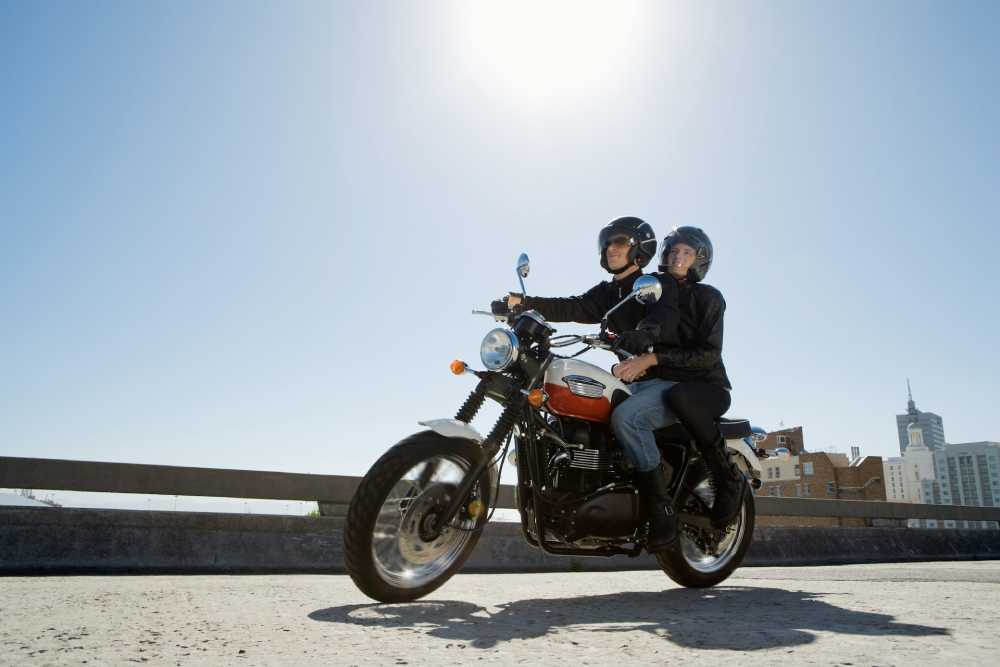Motorcycle safety is crucial for riders and other motorists sharing the road. Unlike cars, motorcycles offer less protection, making riders more vulnerable to accidents and injuries. Given the high risks associated with motorcycle riding, adopting various strategies and best practices to mitigate these dangers is essential.
Whether you’re a rider or a driver, understanding these safety measures can significantly reduce the likelihood of accidents. For those who are unfortunately involved in crashes, engaging the best motorcycle accident law firms in Denver can provide essential guidance and support during these challenging times. Motorcycle safety awareness isn’t just about protecting oneself; it’s about creating a safer environment for everyone on the road.
Essential Gear for Protecting Motorcyclists
Wearing the right gear is one of the most effective ways to protect yourself while navigating a motorcycle. Helmets, jackets, gloves, and boots are not just stylish accessories but lifesaving equipment. Several states even have laws mandating helmet use for this reason.
Advancements in gear technology, such as airbag vests that can inflate upon impact and reinforced jackets with built-in armor, provide enhanced protection, making riding safer. High-quality gear can mean the difference between minor and life-threatening injuries. Besides, reflective gear increases visibility, particularly at night, reducing the chance of collisions.
Strategies for Safe Riding
Safe riding involves more than just adhering to traffic rules. It means riding defensively, being aware of your surroundings, and anticipating potential hazards. Maintaining a safe speed, avoiding blind spots, and ensuring you are visible to other drivers are crucial. Using signals well before making turns or lane changes can also prevent accidents.
Ongoing education through rider training programs can instill better riding habits and provide techniques for managing tricky road conditions. Courses that focus on hazard perception and defensive riding can be particularly beneficial. Training continues once you get your license; regular refresh courses can help keep your skills sharp and up-to-date with the latest safety protocols.
Common Motorcycle Accident Causes and How to Avoid Them
Motorcycle accidents often occur due to specific scenarios such as left-turn collisions, lane splitting, and speeding. For example, many accidents happen when a car makes a left turn in front of an oncoming motorcycle, resulting in a collision. Avoiding these risks requires vigilance and strategy.
Riders can minimize the risks by positioning themselves better in the lane and making themselves more visible to other drivers. Avoiding lane splitting, especially in heavy traffic, and adhering to speed limits significantly lowers accident risks. Simple habits like maintaining a safe following distance and regularly checking mirrors can make a huge difference.
Legal Considerations After an Accident
Knowing your legal rights and responsibilities is essential in the unfortunate event of an accident. Immediate steps include seeking medical attention, documenting the scene, and contacting law enforcement. Collecting witness statements and taking photographs of the accident scene can provide crucial evidence.
Understanding liability and what compensation you may be entitled to is also essential. This includes damages for medical bills, lost wages, and pain and suffering. Consulting with legal professionals specializing in motorcycle accidents can provide clarity and support, ensuring you get the compensation you deserve. Moreover, they can navigate the often complex landscape of insurance claims and legal procedures, giving you the peace of mind to focus on recovery.
Statistically Significant Data on Motorcycle Accidents
Understanding the statistics behind motorcycle accidents can shed light on the importance of safety measures. For instance, according to recent data, motorcyclists are 28 times more likely to die in a crash compared to passenger vehicle occupants. This translates to thousands of preventable deaths and injuries each year. This data underscores the critical need for better safety practices and consistent use of protective gear.
By analyzing these statistics, it’s evident that both motorcyclists and other road users must stay vigilant and adopt proactive safety measures. Some provide a comprehensive overview of these alarming statistics and trends, offering insights into how policy changes and educational programs can make a difference.
Essential Safety Tips for Other Motorists
Other drivers play a significant role in preventing motorcycle accidents. Accidents often occur when drivers fail to see motorcyclists, particularly when changing lanes or making turns. Checking blind spots, understanding motorcycle signals, and giving ample space can go a long way in ensuring the safety of motorcycle riders.
Simple habits like double-checking for motorcycles before changing lanes and being extra cautious at intersections can prevent many accidents. Besides, recognizing the vulnerability of motorcyclists and exercising patience can create a safer road environment for everyone. Sharing the road responsibly is not just a courtesy; it’s a necessary practice that can save lives.
Conclusion: Promoting Safety for All Road Users
Promoting road safety is a collective responsibility. Whether you’re a motorcyclist or a motorist, adopting the discussed safety practices can significantly reduce the risk of accidents. Always be vigilant, wear proper gear, and respect each other’s space on the road. By doing so, we can create a safer environment for everyone. Remember, the goal is not just to protect yourself but also to ensure the safety of others. Let’s make our roads safer and ride responsibly!




